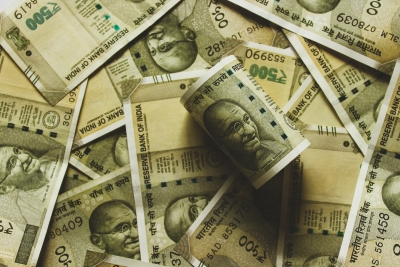New Delhi: Even as merchandise exports are expected to remain under pressure due to a slowing global economy, imports are also likely to cool off from here on as crude prices come down amid concerns of a weak global demand along with lower gold imports, says Sujan Hajra, Chief Economist and Executive Director at Anand Rathi Shares and Stock Brokers.
This, along with the services surplus due to falling imports, is likely to indicate that the current account balance can improve in the near term. Improved trade balance along with better capital flows will be a positive for the rupee, Hajra said in a report.
Trade deficit improved for the second consecutive month in December 2023 on the back of higher sequential increase in exports over imports. Services trade balance too improved as imports contracted.
For the second consecutive month, trade deficit improved as the increase in exports outpaced that of imports. The growth in exports was driven by core exports with gold exports too increasing over November 2023.
Imports too increased in December 2023 driven by higher non-oil non-gold imports as well as gold, whereas oil imports remained flat, the report said.
Services trade surplus improved in December 2023 after dipping in November 2023 driven by a continued contraction in imports. The peak of services exports is behind us with exports continuing to contract as much of the advanced economies slows down.
India’s merchandise trade deficit narrowed further to a 5-month low of $19.8 billion in December 2023 from $20.6 billion in November 2023. The sequential correction was entirely on account of exports, which posted a faster increase vis-a-vis imports, as per a report by Acuite Ratings and Research.
Merchandise exports stood at $38.5 billion (13.5 per cent MoM and 1.0 per cent YoY) in December 2023. Core exports rose to a four-month high of $28.7 billion in December 2023 from $23.6 billion in November 2023 driven by a prominent increase in engineering goods, chemical products and Agri commodities.
Merchandise imports stood at $58.3 billion (6.9 per cent MoM and -4.9 per cent YoY) in December 2023. Core imports rose to $38.0 billion from $34.6 billion in November 2023, led by sequential increase mainly in electronic goods imports (+$2.9 billion).
Suman Chowdhury, Chief Economist and Head – Research at Acuite Ratings & Research, said after the record high trade deficit in October 2023, normalisation has continued to transpire over the months of November-December 2023. This has been largely enabled by a moderation in global commodity prices, despite the escalation of geopolitical risks.
“From an outlook perspective, we continue to believe that merchandise trade deficit in H2 FY24 would be wider in comparison to H1 FY24, owing to sluggish growth in global trade volumes, domestic export restrictions on select agricultural commodities and India’s strategic advantage of importing relatively cheaper Russian oil dissipating”, Chowdhury said.
“However, the recent downside on commodity prices has offered incremental comfort to our past CAD view. As such, we revise our FY24 current account deficit forecast lower to $47 billion (from $67 billion earlier), at 1.3 per cent of GDP. Having said so, tensions in the Red Sea region remain a developing story on watch.
“Persistence or escalation of tensions could manifest more materially over the coming months on India’s trade performance via increase in shipping costs”, Chowdhury added.
–IANS


Comments are closed.